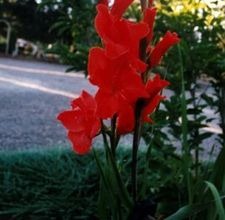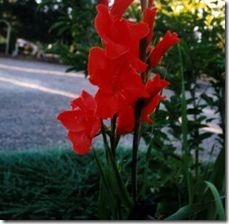Perennials are plants that grow for two or more successive years, but they still require care and maintenance for best results, especially during the fall before cold winter weather arrives. Tender perennials fail to survive the cold temperatures of northern climates while hardier varieties perform well when left in the ground over the winter. Even hardy perennials need some additional fall preparation, however. Perennials overwintered properly provide years of lasting color and enjoyment in the home landscape.
- Difficulty:
- Moderately Easy
Instructions
things you’ll need:
- Shovel
- Peat moss
- Boxes
- Mesh bags
- Gardening shears
- Compost
- Mulch
Tender Perennials
- Dig up tender perennials with a shovel in the fall when foliage begins to yellow and wilt, or after the first hard frost. Cut the foliage with gardening shears at this time as well. The proper height of the cut varies from 1 or 2 inches for the calla lily to 4 inches or more on the dahlia and canna.
- Place perennial bulbs or rhizomes in a warm, dry place to dry. Canna and dahlia dry in about one day, while gladiolus and tuberous begonia takes up to three weeks. Others, such as elephant’s ear and calla lily, take a more moderate one to two weeks to dry completely.
- Store tender perennials in a cool, dark location until spring. Most perennials store well at temperatures of 40 to 50 degrees Fahrenheit, though some prefer slightly higher or lower temperatures. An example is caladium, which needs winter storage temperatures of 60 to 65 degrees Fahrenheit. Bury bulbs or rhizomes in peat moss, put them in a box or hang them in mesh bags.
Hardy Perennials
- Reduce nitrogen fertilization of hardy perennials beginning in mid-summer, with fertilization completely stopped by late in the season. Nitrogen encourages vigorous plant growth that interferes with acclimation to cooler temperatures. Perennials that fail to acclimate themselves before freezing temperatures arrive may suffer serious winter damage or even die.
- Cut back the foliage on hardy perennials if desired for aesthetic reasons or to control pest or0 disease problems in the landscape. Use gardening shears to cut foliage to a height of 2 to 3 inches after the first hard frost in late fall. Uncut foliage benefits many hardy perennials, marking its place in the landscape the following spring and providing additional protection for the crown against cold winter weather. This proves especially important when overwintering perennials that are only partially hardy in your area of the country, advises University of Illinois Extension.
- Topdress the soil with at least 4 inches of an organic amendment. This provides additional nutrients for the plants while improving the soil for next growing season. After the ground freezes, replace compost with another mulch, such as straw, to protect the perennials throughout the winter.
Tips & Warnings
-
Water perennials on a monthly basis throughout the winter in southern locations where temperatures stay above freezing.
-
Never cut hardy perennials down to the ground to avoid damage to next year’s buds.


Deprecated: strpos(): Passing null to parameter #1 ($haystack) of type string is deprecated in /home/agriviek8Qv/agriviet.net/public_html/wp-includes/comment-template.php on line 2522